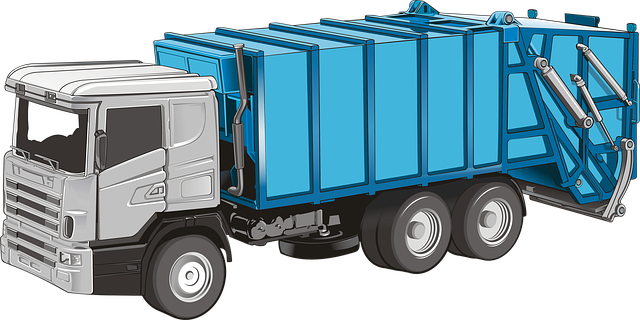Looking to register your car in California? Navigating the process can seem daunting, but with the right preparation, it’s a breeze. This guide will walk you through every step, from understanding the California car registration requirements to securing your vehicle’s unique Vehicle Identification Number (VIN) and submitting applications to the DMV. By following these clear instructions, including key aspects like VIN verification, you’ll be cruising in compliance in no time.
- Understanding the California Car Registration Process
- Gather Required Documents for VIN Verification
- Perform Vehicle Identification Number (VIN) Check
- Submit Applications and Fees to the DMV
- Receive Your Registration Certificate and License Plate
Understanding the California Car Registration Process

Understanding the California Car Registration Process
In California, car registration is a crucial step after purchasing a vehicle. The process involves several key elements to ensure your car complies with state regulations. One of the initial steps is the vin verification process, where you need to establish the validity and history of your vehicle’s unique identifier, known as the Vehicle Identification Number (VIN). This can be done through various means, including using a mobile vin verifier or undergoing a vin inspection at an authorized location.
After vin verification, you’ll need to visit a California Department of Motor Vehicles (DMV) office with necessary documents, such as proof of purchase, insurance, and identification. The DMV will assess your vehicle for any outstanding issues, including emissions tests and safety inspections. Once all requirements are met, they will issue a registration certificate, which is typically valid for one to three years, depending on the type of vehicle.
Gather Required Documents for VIN Verification

Before you begin the car registration process in California, it’s crucial to gather all the required documents for VIN (Vehicle Identification Number) verification. This step is essential as it ensures the accuracy and authenticity of your vehicle’s information. You’ll need several key documents, including the certificate of title from the previous owner, a completed California Vehicle Registration application form, proof of insurance, and a valid driver’s license. Additionally, you must provide a mobile vin verifier or obtain a mobile vin inspection to confirm your car’s VIN details.
Having these documents ready allows for a smoother registration experience. Many California DMV locations now offer mobile vin verification services, making it convenient for you to complete this requirement without having to visit a specific site. A mobile vin inspector can quickly validate the vehicle’s history and ensure all information matches, streamlining the registration process.
Perform Vehicle Identification Number (VIN) Check

Before registering your car in California, it’s crucial to perform a Vehicle Identification Number (VIN) check. This step is essential for ensuring that the vehicle is genuine and has not been reported as stolen or had its identity altered. A mobile VIN inspection or verification service can be particularly convenient, allowing you to complete this process efficiently. These services use advanced technology to cross-reference your car’s unique VIN with comprehensive databases, providing instant results that give you peace of mind.
A mobile vin verifier or mobile vin verification service will visit you at a time and place that suits, making the entire process hassle-free. They’ll check the vehicle’s history, including its maintenance records, accident reports, and any previous registrations, to guarantee that it meets California’s requirements for registration. This thorough VIN verification is a vital step in the car registration process, ensuring both your safety and compliance with local regulations.
Submit Applications and Fees to the DMV

To begin the process of registering your car in California, you’ll need to submit several applications and fees to the Department of Motor Vehicles (DMV). This step is crucial for ensuring that your vehicle complies with state regulations and can legally operate on California roads. Start by filling out Form DV-140, which serves as the Application for Title and Registration. Along with this form, you’ll need to provide essential documents like proof of ownership, valid identification, and a completed Vehicle Identification Number (VIN) verification. The VIN is a unique code that identifies your car, and accurate VIN verification is essential for the registration process.
As part of your application package, consider using services like mobile VIN verification or a VIN inspection to ensure the VIN data’s accuracy. These services, often provided by specialized companies, offer convenient and efficient ways to confirm your vehicle’s details, streamlining the registration experience. Remember that timely submission of complete documentation is key to expediting your car’s registration in California.
Receive Your Registration Certificate and License Plate

After completing your car’s purchase and ensuring all necessary paperwork is in order, the next step is to receive your Registration Certificate and License Plate. This involves a crucial process known as VIN verification, where the unique Vehicle Identification Number (VIN) of your car is cross-checked against state records to ensure its authenticity and history. Once your VIN inspection is cleared, you can proceed with the registration.
The California Department of Motor Vehicles (DMV) will issue your Registration Certificate, which proves ownership and must be carried in your vehicle at all times. Alongside this, you’ll receive a set of license plates that represent your official car registration. Opting for a mobile VIN verifier or conducting a simple online check can help streamline this process, ensuring a smooth transition from buyer to registered vehicle owner.
Registering a car in California involves several straightforward steps, from gathering necessary documents to completing the VIN verification process. Once you’ve gathered all required paperwork, perform a Vehicle Identification Number (VIN) check and submitted your applications with the appropriate fees, you’ll be on your way to receiving your registration certificate and license plate. Remember to keep your documentation up-to-date for future reference and smooth sailing on California’s roads.
